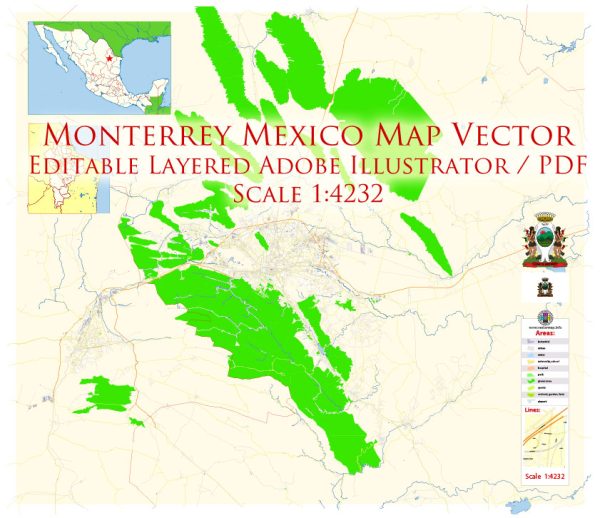Monterrey, the capital and largest city of the northeastern state of Nuevo León, Mexico, has a rich history of urban development that spans several centuries. The city has evolved from a colonial settlement to a major industrial and economic hub. Here is an overview of Monterrey’s history of urban development:
- Colonial Period (16th-18th centuries):
- Monterrey was founded on September 20, 1596, by Diego de Montemayor, a Spanish explorer.
- The city was established as a strategic outpost to protect against indigenous raids and to facilitate trade between the interior of Mexico and the northern territories.
- During the colonial period, Monterrey’s economy relied on agriculture and ranching.
- 19th Century:
- Monterrey played a significant role in the Mexican War of Independence (1810-1821) and later in the Mexican-American War (1846-1848).
- The city’s growth was spurred by the development of industries such as textiles and steel.
- Industrialization (Late 19th-20th centuries):
- The late 19th century saw Monterrey transform into an industrial center. The establishment of the Compañía Fundidora de Fierro y Acero de Monterrey (Monterrey Iron and Steel Foundry Company) in 1900 was a key catalyst for industrialization.
- The influx of industry led to population growth, and Monterrey became a major economic player in Mexico.
- Infrastructure Development:
- Monterrey’s growth was accompanied by the development of infrastructure, including the construction of roads, bridges, and the Cerro de la Silla Tunnel in the mid-20th century.
- The city’s skyline began to change with the construction of modern buildings, reflecting its status as an industrial and financial center.
- Economic Diversification (Late 20th-21st centuries):
- Monterrey continued to diversify its economy beyond heavy industry, expanding into sectors such as finance, services, and technology.
- The city attracted multinational corporations, contributing to its status as one of the wealthiest and most developed cities in Mexico.
- Urban Challenges:
- Monterrey, like many rapidly growing cities, faced challenges such as urban sprawl, traffic congestion, and environmental concerns.
- Efforts have been made to address these issues through urban planning initiatives and sustainable development projects.
- Cultural and Educational Hub:
- Monterrey has become a cultural and educational hub, with numerous museums, theaters, and educational institutions contributing to its vibrant cultural scene.
- Contemporary Urban Development:
- In recent years, Monterrey has focused on sustainable urban development, including the revitalization of public spaces and the promotion of green initiatives.
Monterrey’s history of urban development is a dynamic narrative of growth, industrialization, and diversification, reflecting the city’s resilience and adaptability over the centuries.


 Author: Kirill Shrayber, Ph.D.
Author: Kirill Shrayber, Ph.D.